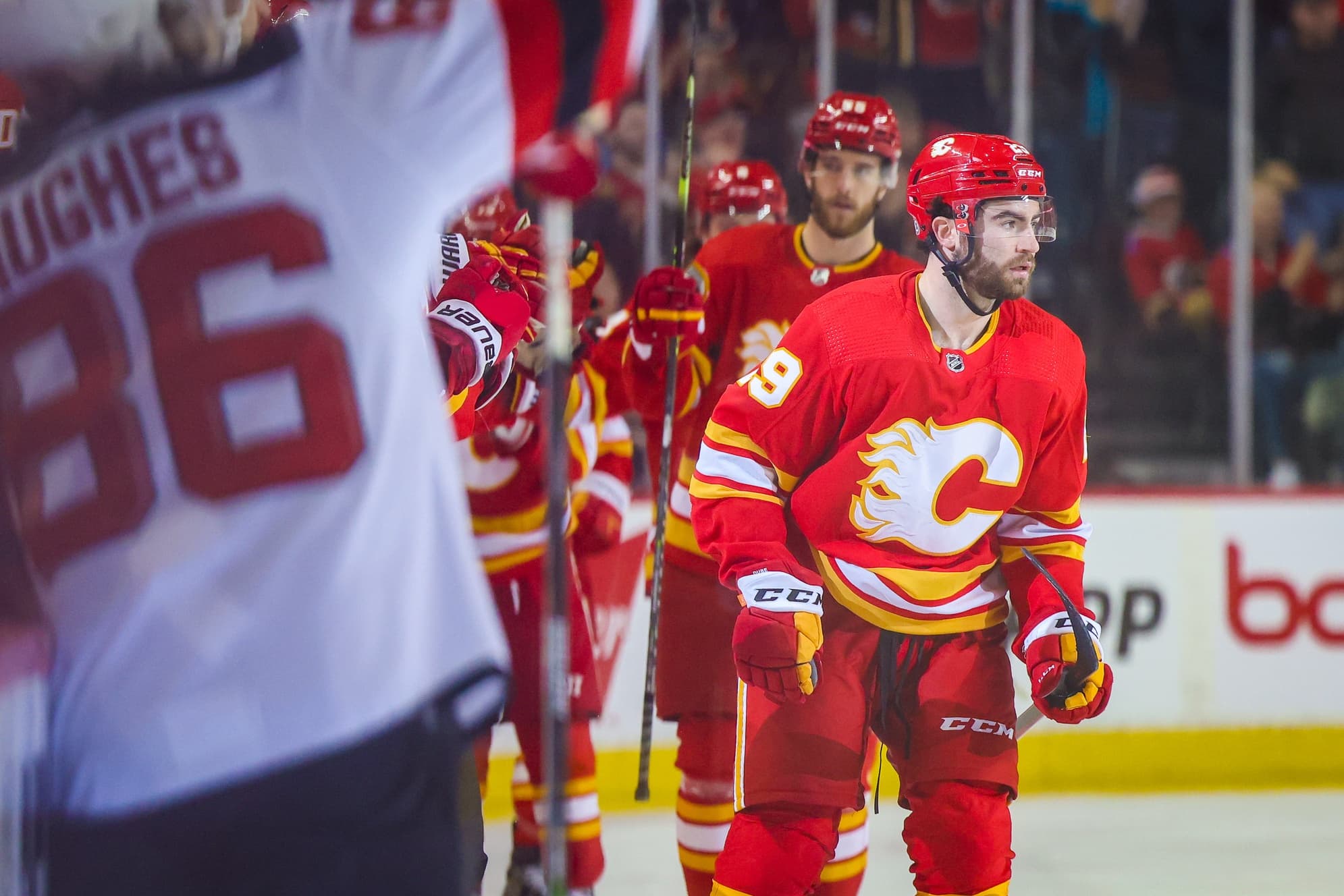Nation Sites
The Nation Network
FlamesNation has no direct affiliation to the Calgary Flames, Calgary Sports and Entertainment, NHL, or NHLPA
2022 Calgary Flames trade deadline CBA primer

Photo credit: Sergei Belski-USA TODAY Sports
The 2022 National Hockey League trade deadline is 1 p.m. MT on Monday afternoon. The Calgary Flames are primed to potentially make more moves, but they’re operating under some constraints – the primary constraints being defined by the NHL’s collective bargaining agreement.
Here are the CBA tidbits to keep in mind between now and the trade deadline.
Roster size and the salary cap
The 23-man roster limit expires as of midnight ET (10 p.m. MT) on Sunday night (the night before the deadline), at which point the only limitation for teams is the $81.5 million salary cap. For a player to be added to the NHL roster, though, that team has to have sufficient cap space to keep that player on the NHL roster for the remainder of the season – even if the call-up is intended to be short-term. (Good news: there’s no roster limit and no salary cap in the playoffs.)
The exception to this rule are “roster emergency exception” recalls but those are preceded by a team playing below the minimum 18 skater limit for a game due to insufficient cap space to bring up a replacement player. Players on these special REE recalls don’t count against the cap at all, but the player being recalled under those conditions has to have a cap hit of $1 million or less to be eligible for the recall. (For this season only teams can use REE recalls immediately if they’re shorthanded because of a COVID outbreak, they don’t need to play a game shorthanded first.)
Related to this: players who are not on a team’s reserve list as of the trade deadline cannot play for that team in the playoffs. The reserve list is a team’s signed players and the unsigned prospects they hold the rights to. (This is why Connor Mackey couldn’t play for the Flames in the 2020 bubble playoffs; he was signed as a free agent after the trade deadline.)
Trades and signings are still allowed, though, but players acquired wouldn’t be eligible to play in the post-season. Similarly, waivers still exist, but players claimed on waivers after the trade deadline wouldn’t be allowed to play for the claiming team in the playoffs.
Recalls and demotions
To be eligible to play in the AHL for the remainder of the season, a player has to be on the AHL roster as of the trade deadline. Similarly, players on the NHL roster as of the trade deadline cannot be demoted for the remainder of the season. The exception to these linked rules are players who are up on emergency recall, which doesn’t apply to the Flames. (This is why the Flames traded Brandon Davidson last year for future considerations; he was up after the trade deadline and couldn’t be sent down to the AHL.)
After the trade deadline, teams are limited to four regular recalls until the end of the regular season. Emergency recalls are used to help teams meet the minimum roster requirements (two healthy goalies, six healthy defensemen and/or 12 healthy forwards). Regular recalls are ones that aren’t necessary for those roster requirements. (Again: “roster emergency exception” recalls also exist.)
Contract limit
Teams are limited to 50 active NHL contracts during any given season. Exceptions are contracted players who are (a) under the age of 20 and (b) playing in junior. So Jeremie Poirier and Yan Kuznetsov don’t count against the contract limit, nor does Rory Kerins, whose contract begins next season.
The Flames have 48 active contracts, so they can add two more active NHL deals and remain compliant.
THIS ARTICLE BROUGHT TO YOU BY DAILYFACEOFF

Looking to up your fantasy hockey game? DailyFaceoff has the tools you need for both daily and season-long fantasy leagues, including a lineup optimizer, daily projections, and a whole lot more. Sign up for the DailyFaceoff tools here.
More from FlamesNation
Breaking News
- Looking at some unique Flames holiday history
- Flames weekly notebook: Rasmus Andersson has been excellent
- Flames Prospect Roundup: How the standings shape up entering the holiday break
- NHL Notebook: Sidney Crosby takes sole possession of most points in Penguins’ franchise history
- FlamesNation Mailbag: Waiting for Santa with reader questions
